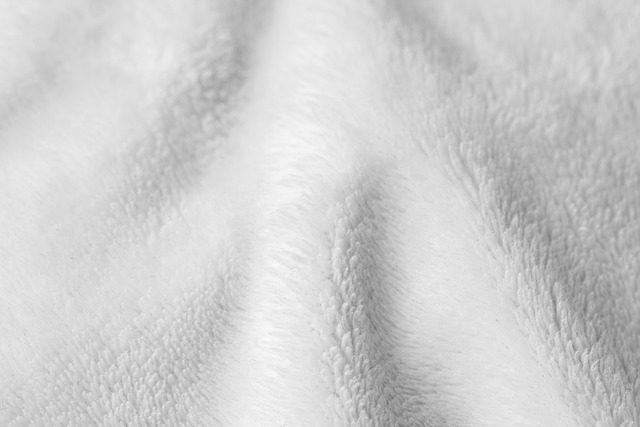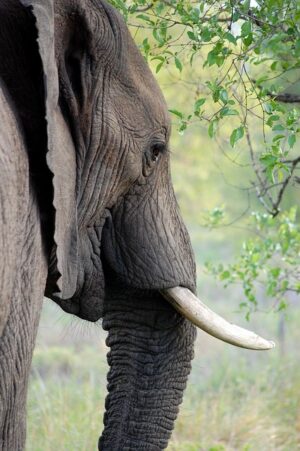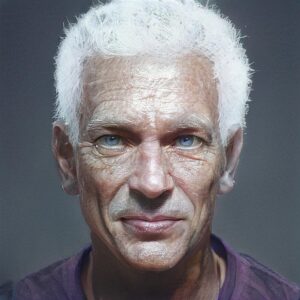Unlock Youthful Skin: Comprehensive Wrinkle Reduction Strategies

Skin aging is influenced by intrinsic and extrinsic factors. Combating these through lifestyle chang…….
In an era where longevity and quality of life are at the forefront of global health agendas, anti-aging treatments have emerged as a dynamic field, capturing the interest of scientists, healthcare professionals, and individuals seeking to defy time’s effects. This comprehensive article delves into the world of anti-aging treatments, exploring its multifaceted nature, global reach, and profound impact on human life expectancy and well-being. By examining various aspects, from scientific breakthroughs to economic implications, we aim to provide an insightful guide to understanding this ever-evolving domain.
Anti-aging treatments encompass a diverse range of interventions designed to mitigate or reverse the signs and effects of aging. These treatments target various physiological and cellular processes, aiming to improve overall health, restore youthful functions, and extend lifespan. The core components of anti-aging therapies include:
The pursuit of longevity and youthfulness has been a human endeavor for centuries. Ancient civilizations used herbs and natural remedies to promote health and delay aging. However, modern anti-aging treatments have evolved significantly over the past few decades with advancements in science and technology. The field gained momentum in the 1970s and 1980s when researchers began uncovering the mechanisms of aging at a cellular level, leading to the development of targeted interventions.
Early anti-aging strategies focused primarily on addressing visible signs of aging, such as wrinkles and age spots. Over time, research expanded to include studies on telomere biology, epigenetics, and the role of inflammation in aging, resulting in more holistic approaches. Today, anti-aging treatments are a multi-billion-dollar industry, reflecting the growing demand for solutions that promise not just cosmetic improvements but also enhanced overall health and longevity.
Anti-aging treatments have gained global traction, with countries across all continents investing significantly in research, development, and market opportunities. The international influence of these treatments is evident in the following trends:
North America and Europe: These regions have long been at the forefront of anti-aging research and technology, with robust clinical trials and regulatory frameworks. Countries like the United States, the UK, and Germany are renowned for their advancements in medical aesthetics and cellular therapies.
Asia Pacific: Rapid economic growth and an aging population have fueled the demand for anti-aging products in countries like Japan, South Korea, and China. The region is witnessing significant investments in nutraceuticals, dietary supplements, and skincare innovations.
Emerging Markets: Brazil, India, and Mexico are emerging as key players, with growing middle classes seeking anti-aging solutions. These markets offer significant potential for both local and international companies.
Anti-aging treatments exhibit regional variations in terms of availability, affordability, and consumer preferences. High-income countries generally have wider access to a diverse range of options, while lower- and middle-income nations may face challenges related to cost and limited product variety. For instance:
| Region | Average Cost of Premium Anti-Aging Cream (in USD) | Availability of Medical Procedures |
|---|---|---|
| North America | $150 – $300 per 50ml tube | Widely available, with specialized clinics and aesthetics centers |
| Europe | €120 – €250 per jar (75ml) | Readily accessible through dermatology clinics and online retailers |
| Asia Pacific | Varies widely, from affordable local brands to luxury imports (~$50 – $200+) | Growing availability of cosmetic procedures, with varying standards of regulation |
The global anti-aging treatments market has experienced substantial growth over the past decade, driven by several economic factors:
Aging Population: The worldwide population is aging rapidly, creating a larger target market for anti-aging products and services. According to the World Health Organization (WHO), people aged 60 and above numbered 727 million globally in 2020, representing 9.4% of the total population. This trend is expected to continue, presenting significant opportunities for anti-aging industries.
Increasing Disposal Income: Rising incomes, particularly in emerging economies, have led to greater discretionary spending on health and wellness, including anti-aging solutions.
Changing Lifestyle Preferences: Growing awareness about personal care, fitness, and healthy aging has prompted consumers to invest in premium products and services.
The economic landscape of anti-aging treatments is characterized by:
Diverse Investment Opportunities: Companies operating in this sector include pharmaceutical giants, biotechnology startups, cosmetic manufacturers, medical device developers, and skincare brands. Investors are attracted by the potential for high returns on research and development (R&D) investments.
Mergers and Acquisitions (M&A): The industry often sees mergers and acquisitions as a strategy to gain access to new technologies, expand market share, or diversify product portfolios.
Startup Innovations: Biotechnology startups are driving innovation with cutting-edge cellular therapies, gene editing, and personalized medicine approaches. These companies attract venture capital funding for their groundbreaking research.
One of the most significant developments in anti-aging treatments is the shift towards targeted interventions and personalized medicine:
Genomic Testing: Advances in genomics enable personalized approaches by identifying genetic variations associated with aging and susceptibility to age-related diseases. This information can guide tailored treatment plans.
Pharmacogenomics: This field combines pharmacology and genomics to develop drugs that consider an individual’s genetic makeup, enhancing the effectiveness and reducing side effects of treatments.
Cellular and Regenerative Medicine: Stem cell therapies, tissue engineering, and PRP injections offer regenerative capabilities, potentially slowing or reversing age-related cellular decline.
Several emerging technologies are poised to revolutionize anti-aging practices:
Nanorobotics: Nanorobots could be used for targeted drug delivery, tissue repair, and even cellular housekeeping, addressing age-related accumulation of damaged cells.
3D Bioprinting: This technology allows the creation of customized tissues and organs using a patient’s own cells, offering potential solutions for organ regeneration and age-related decline in tissue function.
Genome Editing (CRISPR): CRISPR-Cas9 technology enables precise editing of the genome, opening doors to potential treatments for age-related genetic disorders and improvements in longevity.
Lifestyle modifications, particularly exercise and nutrition, remain fundamental pillars of anti-aging strategies. Regular physical activity and a balanced diet can significantly impact overall health and delay the onset of age-related conditions. Some key aspects include:
Aerobic Exercise: Activities like walking, swimming, and cycling improve cardiovascular health, boost mood, and promote healthy aging.
Strength Training: Resistance exercises help maintain muscle mass and bone density, which tend to decrease with age.
Mediterranean Diet: Rich in fruits, vegetables, whole grains, legumes, and healthy fats, this diet is associated with reduced risk of chronic diseases and improved longevity.
Caloric Restriction (in moderation): Reducing calorie intake in a controlled manner has been shown to extend lifespan in various species, although it requires careful monitoring to avoid nutritional deficiencies.
Chronic stress and inadequate sleep are significant contributors to accelerated aging and age-related diseases. Incorporating stress management techniques and prioritizing quality sleep can have profound anti-aging effects:
Mindfulness and Meditation: Practices like mindfulness meditation, yoga, and deep breathing exercises reduce stress hormone levels and promote relaxation.
Adequate Sleep: Aim for 7-9 hours of uninterrupted sleep per night to support immune function, cognitive performance, and hormonal balance.
Light Therapy: Exposure to specific wavelengths of light can help regulate circadian rhythms, improve mood, and alleviate seasonal affective disorder (SAD).
Safety and efficacy are critical concerns in the anti-aging treatments industry. Regulatory bodies worldwide play a vital role in ensuring that products and procedures meet specific standards:
Food and Drug Administration (FDA) in the US: The FDA regulates cosmetic products, medical devices, and drugs through various guidelines and requirements for clinical trials.
European Medicines Agency (EMA): The EMA assesses and approves pharmaceuticals and biomedicals for the European market, ensuring their quality, safety, and efficacy.
Local Health Authorities: Many countries have local regulatory bodies that oversee medical practices and product registrations within their jurisdictions.
The anti-aging industry also raises ethical questions and concerns:
False Claims and Misleading Advertising: Some companies make exaggerated claims about their products’ abilities, potentially misleading consumers into making uninformed decisions.
Unregulated Practices: Non-medical aesthetics procedures performed by untrained individuals pose risks to consumer safety and health.
Ethical Use of Stem Cells: The use of stem cells in therapies raises ethical concerns regarding cell sourcing, potential immune reactions, and the need for informed consent from donors.
The anti-aging treatments industry is a dynamic, multi-faceted field that continues to evolve with scientific discoveries and technological advancements. As our understanding of aging deepens, personalized, holistic approaches are becoming the norm. While significant progress has been made, much remains to be explored in terms of safe and effective interventions that can help individuals live longer, healthier lives.
The future of anti-aging holds promise with emerging technologies like nanorobotics, 3D bioprinting, and genome editing, but also demands careful consideration of ethical, regulatory, and safety aspects. As research progresses, it will be crucial to balance the pursuit of longevity with maintaining the quality of life and preserving human dignity across all ages.

Skin aging is influenced by intrinsic and extrinsic factors. Combating these through lifestyle chang…….

Non-surgical wrinkle reduction treatments have gained popularity for combating aging signs. Advanced…….

Laser technology offers powerful wrinkle reduction solutions, targeting specific skin concerns with…….

Anti-aging should be personalized, addressing skin type, tone, health, and lifestyle. Customized pro…….

Personalized consultations are crucial for effective wrinkle reduction strategies. Skincare experts…….

Laser skin resurfacing is a non-invasive procedure using advanced lasers for substantial wrinkle red…….

Understanding wrinkles is key to effective wrinkle reduction. There are two main types: expression l…….

Dermal fillers using hyaluronic acid or other substances are a popular non-surgical wrinkle reductio…….

Laser skin resurfacing is a non-surgical procedure using concentrated light beams to renew top layer…….

Chemical peels are a popular anti-aging treatment that uses AHAs or BHAs to exfoliate and rejuvenate…….